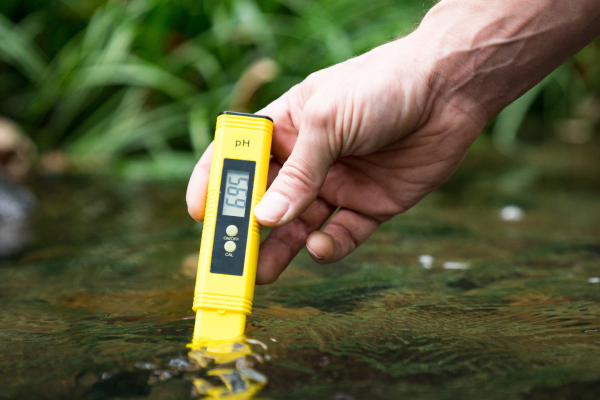Blog
How Important Is pH Control in Wastewater Treatment Plants?

Our environment needs water treatment plants to retain ecological well-being by cleaning the reclaimed water for return to nature or reuse. One of their essential functions is controlling the pH level in water. For efficient treatment, it is necessary to maintain a certain pH that indicates the acidity or alkalinity of this liquid.
Understanding pH and its Significance
pH quantifies a range of 0 to 14. This is neutral at 7, not acid or base. Acidic values are below 7, while alkaline ones go above it. In wastewater treatment, maintaining the proper pH is essential for several reasons:
-
Equipment Safety: Abnormal pH can cause corrosion or damage to treatment plant equipment, leading to expensive downtime and repairs.
-
Process Efficiency: Several treatment processes, such as biological treatments and chemical reactions, function optimally within particular pH levels. These methods may be ineffective if the pH is too high or too low.
-
Ecological Ramifications: Unsuitable pH released into the water can devastate aqueous life and ecosystems. As such, ensuring that treated water has an environmentally safe pH level is pivotal.
Importance of Water Purification via pH Adjustment
Chemicals are usually added to alter the pH to a preferred range while purifying wastewater. This step is vital because incoming wastewater may have highly varied pH levels depending on its source. For instance, while industrial effluent could be too acidic or basic, domestic sewage typically approaches a neutral nature.
Usual Ways of Adjusting pH
-
Neutralization: This is the most common method and involves adding an acid or base to the water to neutralize it. For instance, Sodium hydroxide can be added if the water is too acidic. On the other hand, an acid like sulfuric acid might be used if it turns out that it’s too basic.
-
Buffering: At times, chemicals that maintain a constant level of pH in water need to be added. Such chemicals are called buffers.
-
Aeration: In some instances, merely adding air to water can help adjust pH. This happens because CO2 in the air reacts with H20, forming carbonic acid, which reduces pH values.
Monitoring and Regulating Wastewater pH
Continuous monitoring is required for effective control of wastewater pH. Current treatment plants are equipped with advanced sensors and automated systems to monitor pH levels. These systems can include the automatic addition of chemicals that adjust the pH.
pH Control Steps
-
Sampling: Water samples are regularly collected at different stages during the treatment process.
-
Measurement: The samples’ pH is checked by using pH meters.
-
Adjustment: If the chemical is not within the desired range, necessary alterations must be made.
-
Verification: Post-regulation, the pH is measured again to confirm if it lies within a given target range.
Challenges during pH Adjustment in Wastewater Treatment
However indispensable it is to control pH, certain challenges could affect this objective. Some of these common challenges with pH adjustment in wastewater treatment:
-
Variability in Incoming Wastewater: The pH of raw wastewater can change frequently, making the maintenance of a steady pH difficult.
-
Chemical Costs: Chemicals adjusting the pH can be costly, and using inadequate or excessive amounts might create issues in return.
-
Environmental Regulations: Strict environmental regulations concerning discharged water’s pH are obligatory for treatment plants, mainly due to their difficulty.
Benefits of Proper pH Control

- Improved Treatment Efficiency: Optimum pH levels boost the efficiency of biological and chemical treatment processes.
- Extended Equipment Life: Adequate pH maintenance protects equipment from corrosion or damage, lowering maintenance costs.
- Regulatory Compliance: When wastewater treatment plants ensure reasonable control of pH, they guarantee meeting environmental standards in terms of treated water, averting potential legal issues and fines.
- Environmental Safety: This helps protect local ecosystems and aquatic life by ensuring that any discharged water is safe.
To Wind Up
Water treatment is an important process for wastewater pH control. Therefore, these plants can guarantee efficient operations by aligning their systems to appropriate pH levels, protecting their machines, and complying with environmental guidelines. Wastewater pH control is essential for effective water production and wastewater treatment from an ecological perspective.
General International Group’s Role - Water Treatment Plant in East Africa
General International Group provides high-quality water treatment solutions across the globe. Among others, its water treatment plant in East Africa has advanced technology for pH control, among other effective treatment methods. In this way, clean and safe water is guaranteed, hence promoting sustainability in that part of the world.